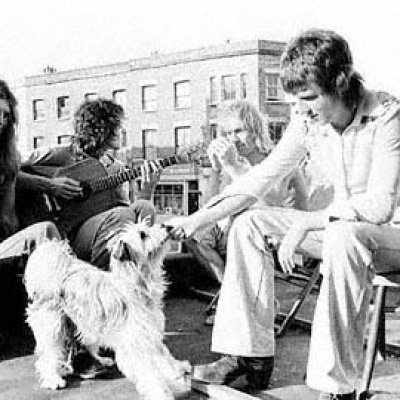
Hatfield and the North
by Jason Ankeny Emerging from the Canterbury, England musical community which also launched Gong and Kevin Ayers the Whole World, the whimsical progressive rock unit Hatfield and the North formed in 1972. Named in honor of a motorway sign outside of London, the groups founding membership brought together a whos-who of the Canterbury art-rock scene — vocalist/bassist Richard Sinclair was a former member of Caravan, guitarist Phil Miller had tenured with Robert Wyatt in Matching Mole, and drummer Pip Pyle had served with both Gong and Delivery. After a series of line-up shuffles, keyboardist Dave Stewart (an alumnus of Egg) was brought in to complete the roster, and in tandem with the Northettes — a trio of backing vocalists consisting of Barbara Gaskin, Amanda Parsons and Ann Rosenthal — the group began gigging regularly. Upon signing to Virgin, Hatfield and the North recorded their 1974 self-titled debut LP, a jazzy, largely improvisational work halfway between melodic pop and more avant-garde stylings. A single, Lets Eat (Real Soon), appeared at the end of the year, and in 1975 the group resurfaced with The Rotters Club; although the record briefly landed in the U.K. charts, their commercial future looked dim, and so Hatfield and the North disbanded within months of the albums release. Sinclair soon joined Camel, while Stewart recorded with Bill Bruford before finding pop success in 1981 with ex-Zombie Colin Blunstone on a cover of the Jimmy Ruffin chestnut What Becomes of the Broken Hearted? In 1989, Hatfield and the North reunited, minus Stewart, for a series of live dates; a document of the performances, Live 1990, followed in 1993.
